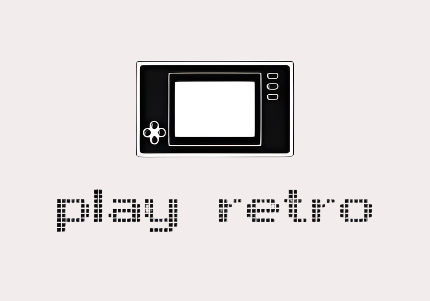
The Evolution of the Video Game Console Controller: From Simple Joysticks to Immersive Experiences
Share
Video game controllers have come a long way since the early days of gaming. As technology has advanced, controllers have evolved to become essential tools for player immersion, comfort, and complex gameplay. Let’s journey through the history of the video game controller to see how it has transformed and shaped the gaming experience we know today.
1. The Beginning: Simple Joysticks and Buttons (1970s)
In the 1970s, gaming consoles were in their infancy, and so were their controllers. The early controllers for consoles like the Atari 2600 were minimalistic, usually featuring a single joystick and one or two buttons. Atari’s joystick, for example, had a single red button that was responsible for all actions in the game. This simplicity limited gameplay mechanics, but it introduced millions to the concept of home gaming and set the foundation for future designs.
2. 8-Bit Era: The D-Pad Revolution (1980s)
The 1980s brought about the 8-bit era with the Nintendo Entertainment System (NES) leading the charge. The NES controller was a game-changer, featuring a D-pad (directional pad) and two action buttons (A and B), along with "Start" and "Select" buttons. Nintendo’s D-pad allowed players to move their characters precisely in four directions, making platformers like Super Mario Bros. far easier to control. The NES controller marked a pivotal moment in controller design, as it became the template for most controllers that followed.
3. 16-Bit Era: The Rise of Shoulder Buttons (1990s)
The next leap in controller evolution came with the Super Nintendo Entertainment System (SNES) in the early 1990s. SNES controllers built upon the NES design but added two more action buttons (X and Y) and introduced the first shoulder buttons (L and R). These additions expanded the range of in-game actions, paving the way for more complex games. Sega also experimented with controller layouts during this era, releasing the Sega Genesis controller with three to six buttons. The SNES controller’s innovations are still seen in modern controllers, with shoulder buttons now a standard feature.
4. 3D Gaming and Analog Sticks: The Nintendo 64 and PlayStation (Late 1990s)
As gaming transitioned from 2D to 3D, controllers had to adapt to more dynamic environments. Nintendo responded with the Nintendo 64 (N64) controller, which introduced an analog stick that allowed for smoother 360-degree movement. This was critical for games like Super Mario 64, which required precision in a 3D space. Meanwhile, Sony’s PlayStation controller initially kept the D-pad but eventually introduced dual analog sticks with the DualShock controller in 1997. Dual analog sticks became the norm, enabling better camera control in 3D games and enhancing immersion.
5. DualShock and Vibration Feedback: PlayStation Changes the Game
The DualShock controller for PlayStation went a step further by incorporating vibration feedback (also called "rumble"), which added a new layer of immersion by letting players feel in-game actions, like crashes or explosions, in their hands. This innovation soon became a standard feature across the industry, and vibration feedback remains an essential part of controllers to this day.
6. The Early 2000s: Wireless Technology and Refined Ergonomics
The early 2000s saw a focus on ergonomics and wireless technology. Microsoft’s Xbox controller, launched in 2001, was designed with larger grips to be comfortable for longer gaming sessions. Sony, Nintendo, and Microsoft started experimenting with wireless controllers to eliminate the constraints of being tethered to the console. The Xbox 360’s wireless controller, released in 2005, popularized wireless technology as the new standard, allowing players to game from a distance without the clutter of cables.
7. Motion Control Era: Wii Remote and Beyond (2006)
Nintendo took a bold step in 2006 with the Wii Remote, a motion-sensing controller that could track a player’s physical movements. This led to an explosion of motion-controlled games and made gaming accessible to a wider audience, including people who had never gamed before. Motion controls became so popular that Microsoft and Sony responded with their own innovations, such as Kinect for Xbox and PlayStation Move. While motion control didn’t become the primary control method for all consoles, it proved that gaming could be a physical and social experience.
8. The Modern Era: Advanced Features for Immersive Gameplay (2010s-Present)
Controllers in recent years have reached new levels of sophistication. Sony’s DualShock 4 introduced a touchpad and light bar, while Microsoft’s Xbox Elite Controller gave players customization options like interchangeable thumbsticks and adjustable triggers.
In 2020, Sony released the DualSense controller for PlayStation 5, which took immersion even further. The DualSense features adaptive triggers that adjust resistance based on in-game actions (e.g., pulling back a bowstring) and haptic feedback that provides different sensations for various textures and actions. This level of feedback and immersion is a significant leap from the early days of simple buttons and joysticks.
9. The Future of Controllers
Looking ahead, it’s clear that controllers will continue to evolve as technology advances. VR controllers already bring hand tracking and gesture controls, pointing toward a future where controllers may become an extension of the player’s body. Cloud gaming could lead to controllers that work seamlessly across devices, while AI and machine learning might personalize control schemes for individual players.
Whether you’re a fan of vintage controllers or curious about the latest tech, the history of the video game controller is a testament to how far gaming has come—and a reminder of the excitement still to come in the world of interactive entertainment.
